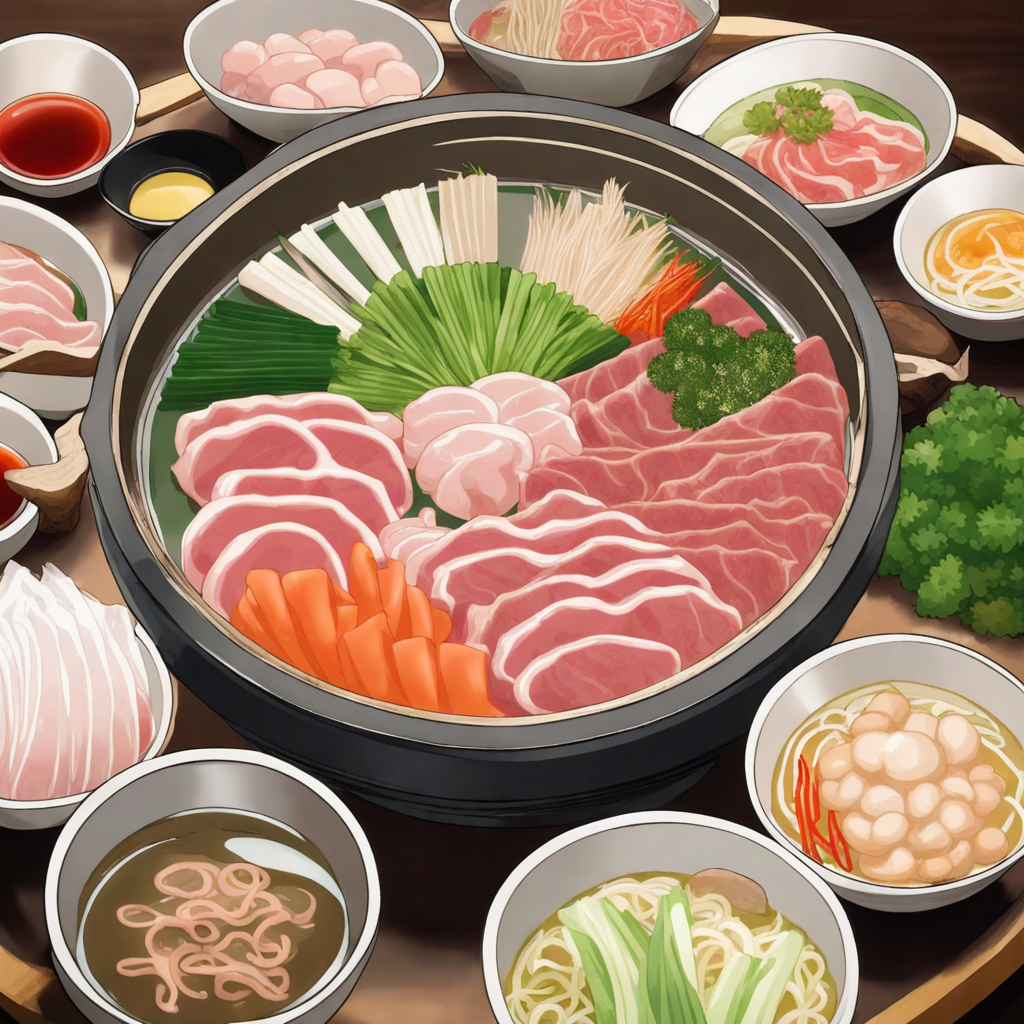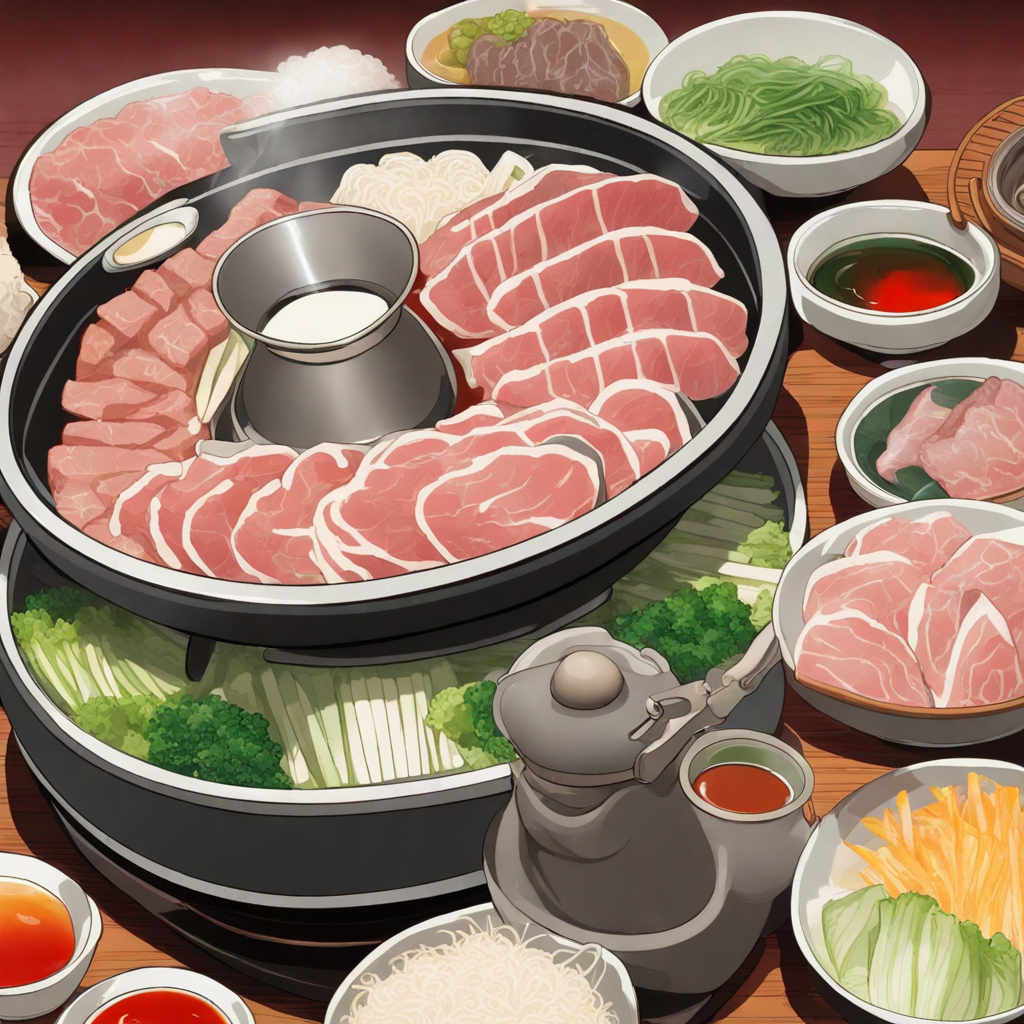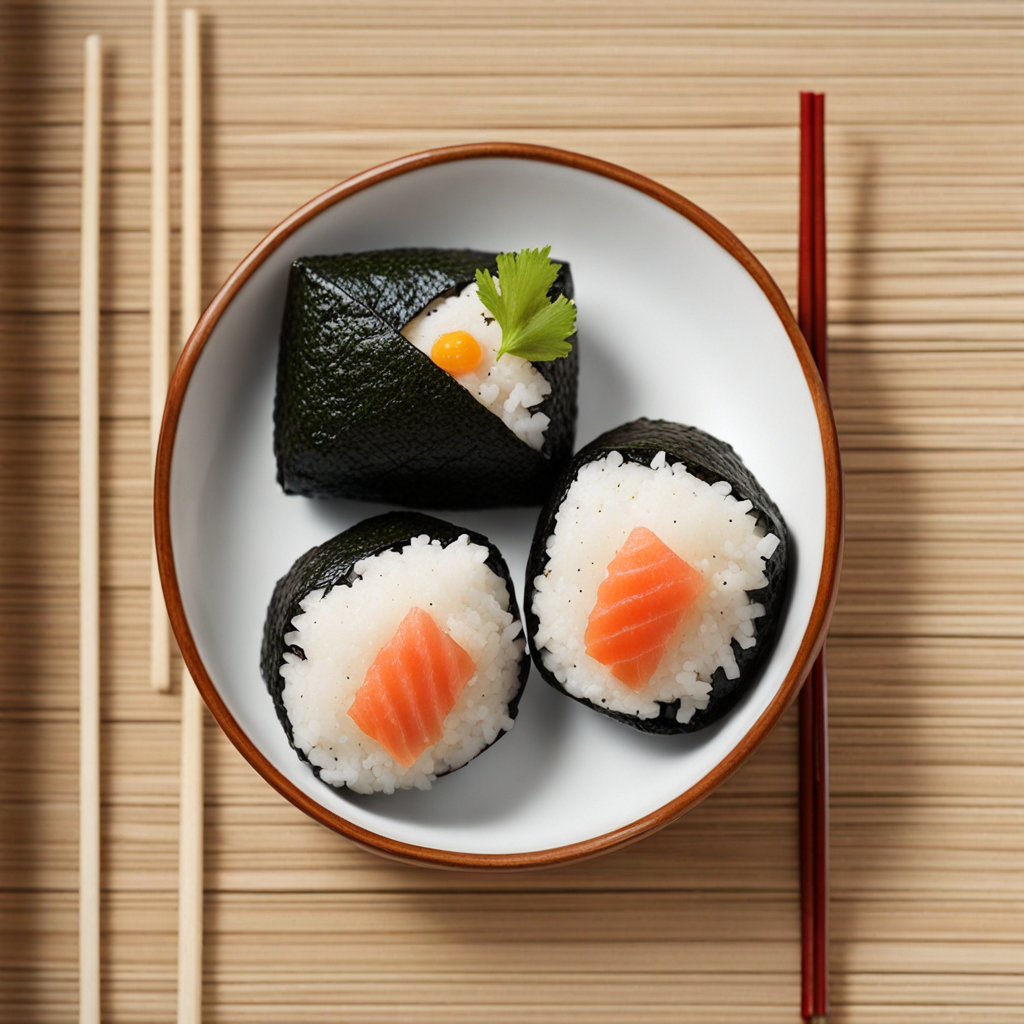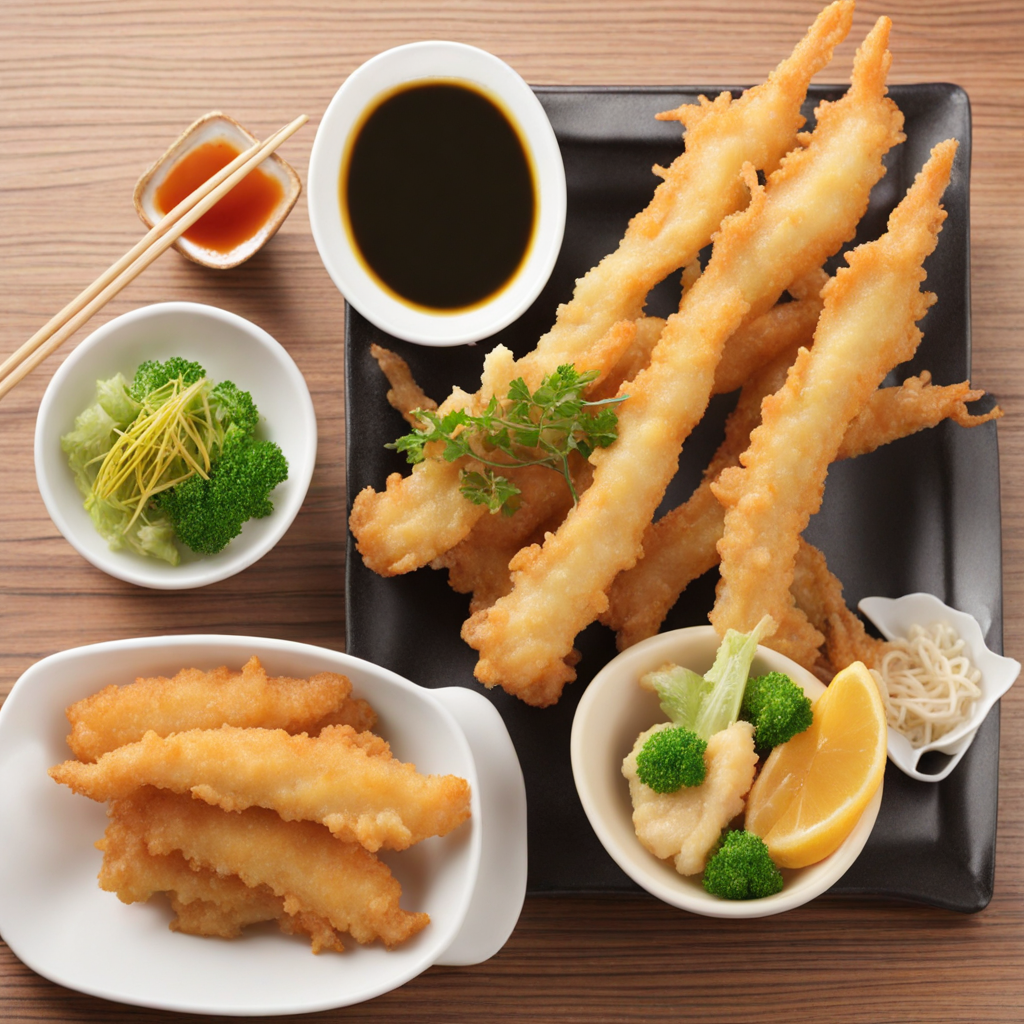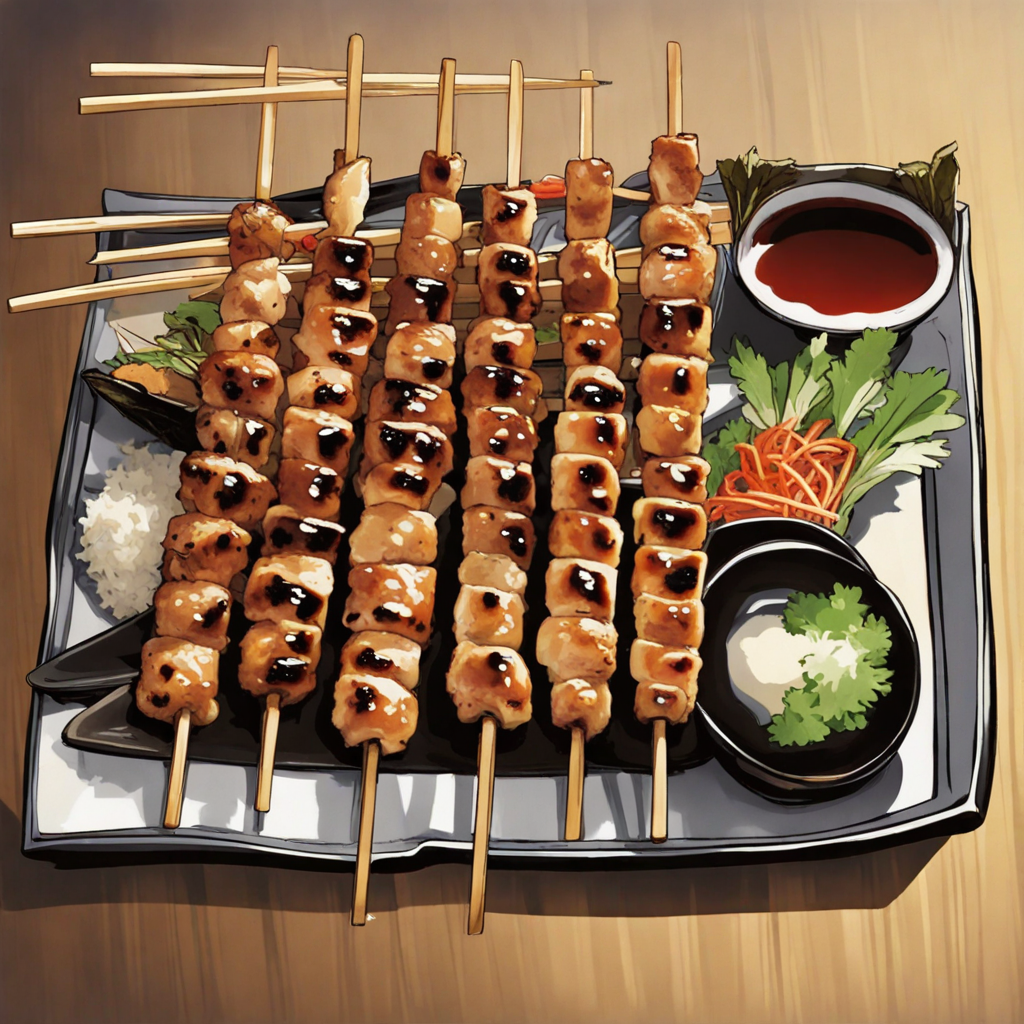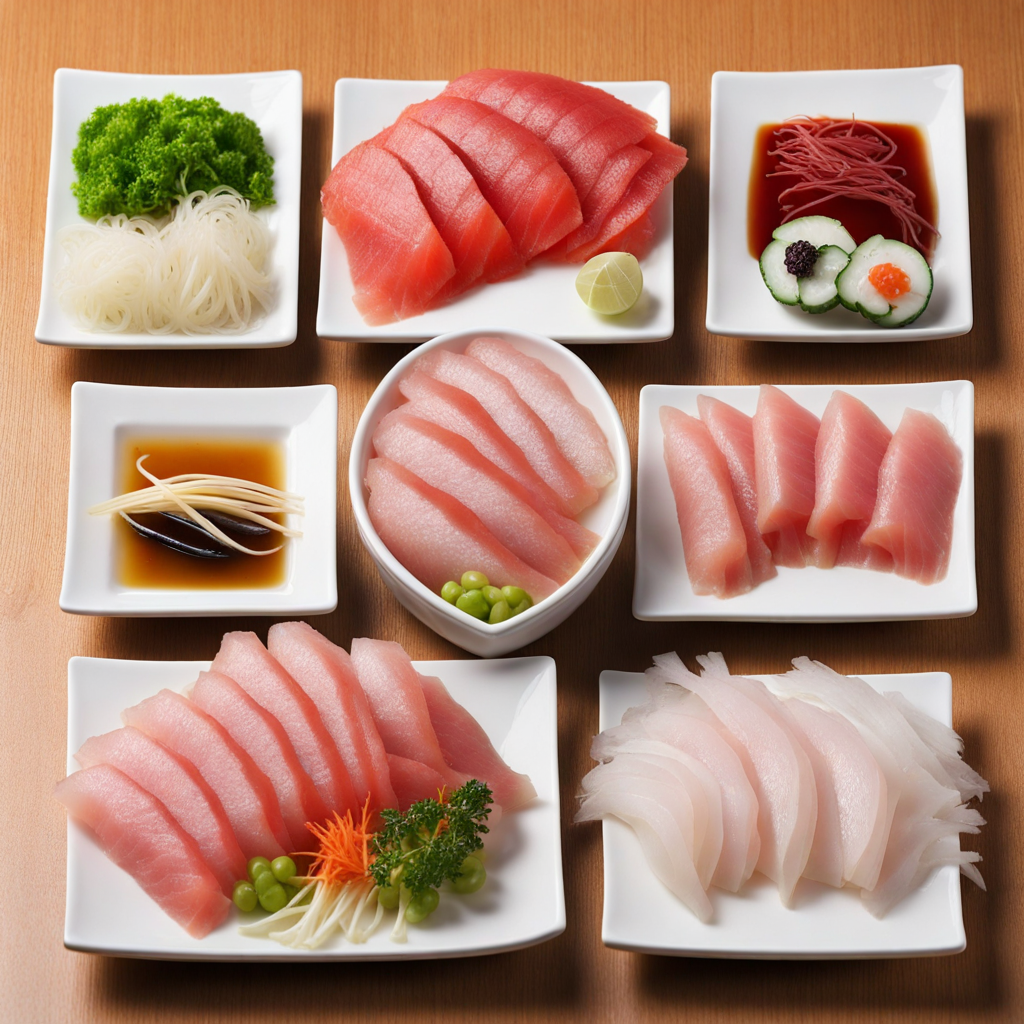Shabu-shabu
Shabu-shabu is a popular Japanese hot pot dish that is renowned for its simplicity and emphasis on fresh ingredients. The name "shabu-shabu" is derived from the Japanese onomatopoeia for the sound of swishing meat in hot broth—“shabu-shabu” mimics the sound made when thin slices of meat are dipped into bubbling water or broth. This dish is typically enjoyed in a communal setting, where diners gather around a pot to cook their own food, making it a social dining experience. Historically, shabu-shabu is believed to have originated in Osaka in the early 20th century, drawing inspiration from Chinese hot pot traditions. It gained popularity post-World War II, particularly in the 1950s, when it became a staple in Japanese cuisine. The dish's rise can be attributed to its healthy preparation method and the post-war emphasis on fresh ingredients and communal dining. Today, shabu-shabu is enjoyed throughout Japan and is often featured in restaurants dedicated to this style of cooking. The flavor profile of shabu-shabu is characterized by its delicacy. The dish typically features a light broth—often made from kombu (dried kelp), which imparts a subtle umami flavor. The simplicity of the broth allows the natural flavors of the ingredients to shine. Diners often enhance the taste by dipping the cooked meat and vegetables into various condiments, such as ponzu sauce (a citrus-based soy sauce) or sesame sauce.
How It Became This Dish
Origin of Shabu-Shabu Shabu-shabu, a beloved Japanese hot pot dish, has its origins tracing back to the mid-20th century. The term itself is an onomatopoeic expression that mimics the sound of thinly sliced meat being swished in boiling broth. While the practice of cooking meat in hot broth is ancient, shabu-shabu as we know it today emerged in Osaka during the 1950s. It is believed that it was inspired by the Chinese dish "huo guo" (火锅), which translates to "hot pot." However, Japanese cooks adapted the preparation and presentation to suit their own culinary traditions, leading to a uniquely Japanese interpretation of the hot pot experience. The dish is heavily associated with the use of high-quality ingredients, particularly beef. Traditionally, shabu-shabu is made with thin slices of marbled beef, often from the Wagyu breed, known for its tenderness and rich flavor. Alongside beef, a variety of vegetables, mushrooms, and tofu are added to the pot, allowing for a communal dining experience. The diners themselves play an active role in the cooking process, which enhances the social nature of the meal. Cultural Significance Shabu-shabu is not just a dish; it embodies a cultural philosophy centered on sharing and togetherness. The Japanese dining experience is often communal, and shabu-shabu exemplifies this with its interactive cooking style. Families and friends gather around the hot pot, where everyone participates in cooking and eating. This participatory aspect fosters connections and encourages conversation, making it a popular choice for gatherings and celebrations. The meal is typically accompanied by a dipping sauce known as "ponzu" (a citrus-based sauce) or "goma" (a sesame sauce), which further enhances the flavors of the cooked ingredients. The choice of dipping sauce can reflect regional variations and personal preferences, adding another layer to the dining experience. This emphasis on flavor, quality ingredients, and the communal aspect of dining together makes shabu-shabu an integral part of modern Japanese culinary culture. Development Over Time As shabu-shabu gained popularity, restaurants specializing in the dish began to emerge, particularly in urban areas like Tokyo and Kyoto. These establishments offered a refined dining experience, often featuring high-end ingredients such as Kobe beef and seasonal vegetables. The rise of shabu-shabu restaurants in the 1970s and 1980s marked a significant evolution in its presentation, with many places adopting an izakaya-style approach, where diners could enjoy a casual yet sophisticated atmosphere. Additionally, shabu-shabu has transcended its traditional boundaries, with chefs experimenting with various ingredients and styles. While classic beef remains the star of the dish, alternative proteins such as pork, chicken, and seafood have found their way into the hot pot, catering to diverse tastes and dietary preferences. Vegetarian and vegan versions have also become popular, utilizing an array of seasonal vegetables and plant-based proteins, reflecting a broader trend towards inclusivity in modern cuisine. Regional Variations In Japan, regional variations of shabu-shabu have emerged, each with distinct characteristics influenced by local ingredients and culinary traditions. For instance, in Hiroshima, diners might find a version that incorporates locally sourced vegetables, while in Hokkaido, seafood shabu-shabu featuring fresh catches from the surrounding waters is highly sought after. These regional adaptations showcase the versatility of shabu-shabu and its ability to integrate local flavors, making it a true reflection of Japan’s diverse culinary landscape. Moreover, shabu-shabu has also embraced a fusion approach in recent years, with chefs incorporating global flavors and techniques. For example, some restaurants may serve shabu-shabu with spicy broths inspired by Southeast Asian cuisines or offer international dipping sauces that elevate the traditional experience. This evolution demonstrates how shabu-shabu remains relevant and adaptive in an increasingly globalized culinary world. Shabu-Shabu in Modern Culture Today, shabu-shabu is not only a staple in Japan but has also gained international recognition. Japanese cuisine has seen a surge in popularity worldwide, and shabu-shabu has become a favored choice among food enthusiasts outside Japan. The dish's interactive nature, along with its focus on high-quality ingredients, aligns well with contemporary dining trends that emphasize experience and quality over mere sustenance. In addition to restaurants, shabu-shabu has also made its way into home cooking. Many Japanese households enjoy the dish during family gatherings or special occasions, often using home hot pots that allow for a similar communal experience. Cooking shabu-shabu at home allows families to tailor the meal to their preferences, experimenting with different meats, vegetables, and sauces. This home-cooked version fosters a sense of nostalgia and connection to cultural roots, as families pass down recipes and traditions through generations. Conclusion The journey of shabu-shabu from its humble origins in Osaka to its current status as a symbol of Japanese cuisine illustrates the dish’s adaptability and significance in social dining. With its emphasis on quality ingredients, communal cooking, and regional variations, shabu-shabu continues to evolve while remaining deeply rooted in Japanese culture. Whether enjoyed in a restaurant or at home, shabu-shabu is a celebration of togetherness, flavor, and the rich culinary traditions of Japan. As it continues to gain popularity worldwide, this delightful dish serves as a delicious gateway into the heart of Japanese gastronomy.
You may like
Discover local flavors from Japan


